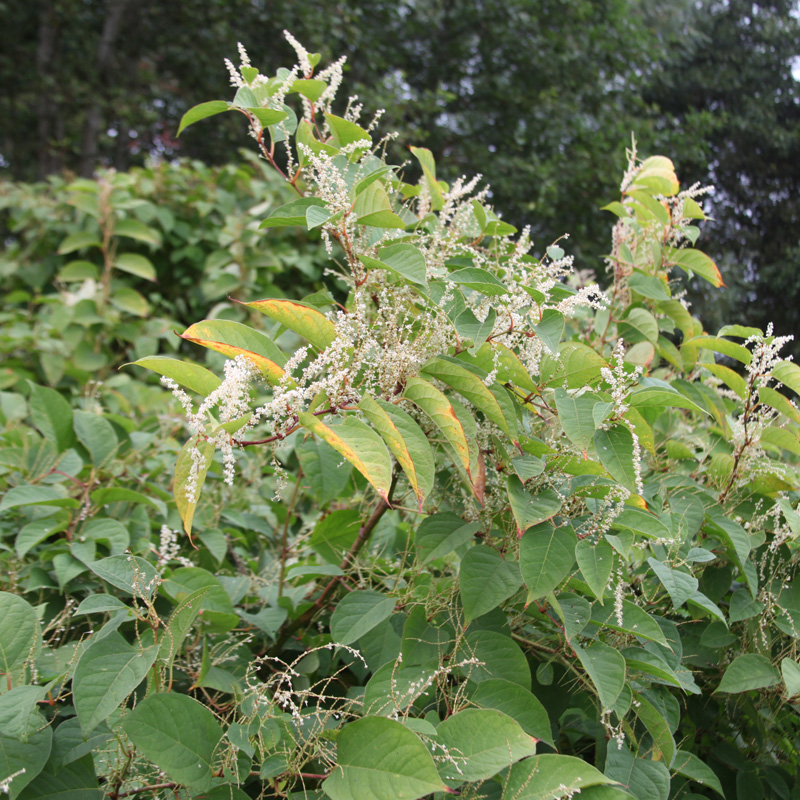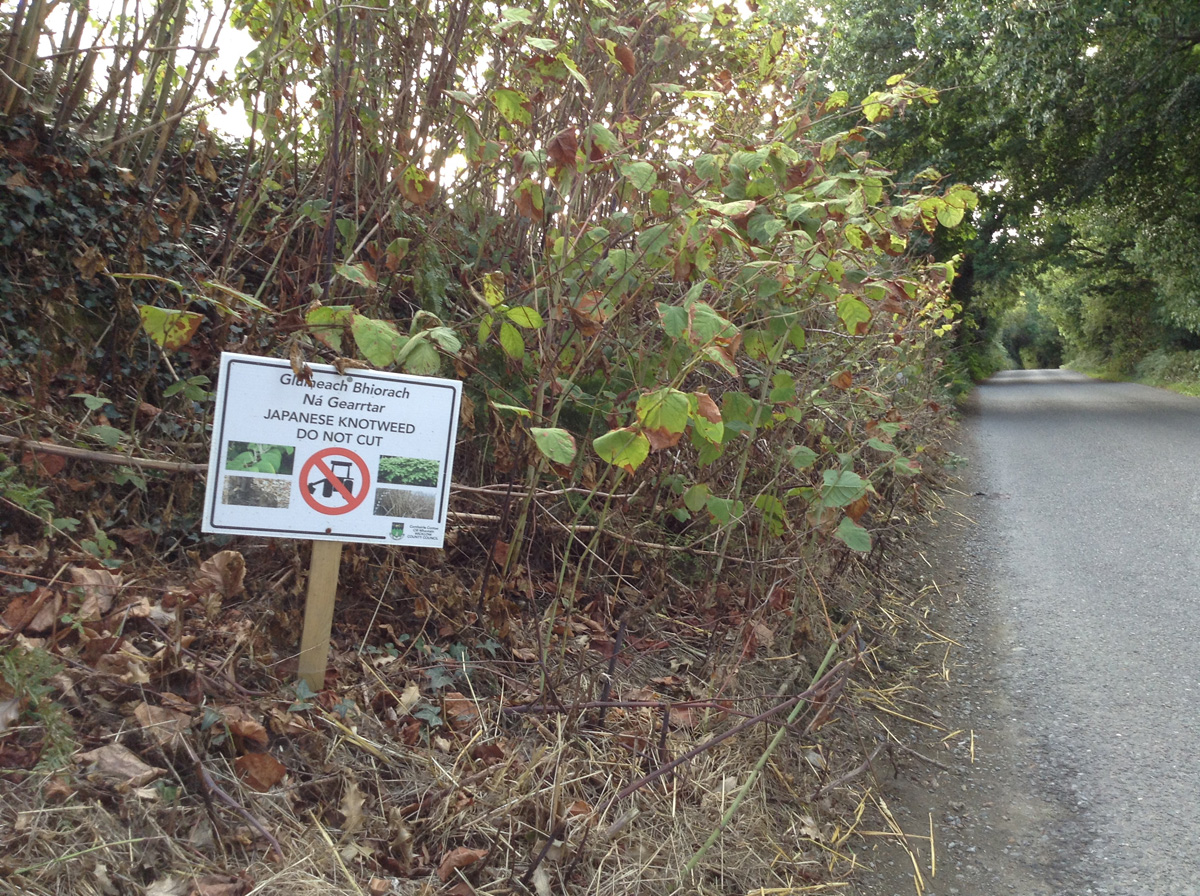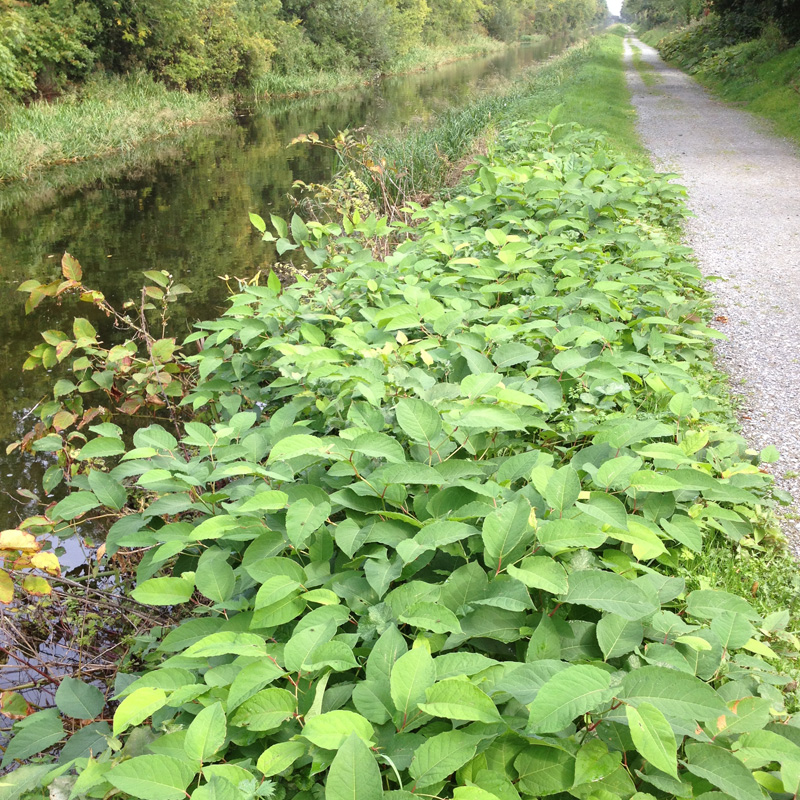Action needed to eradicate Japanese knotweed
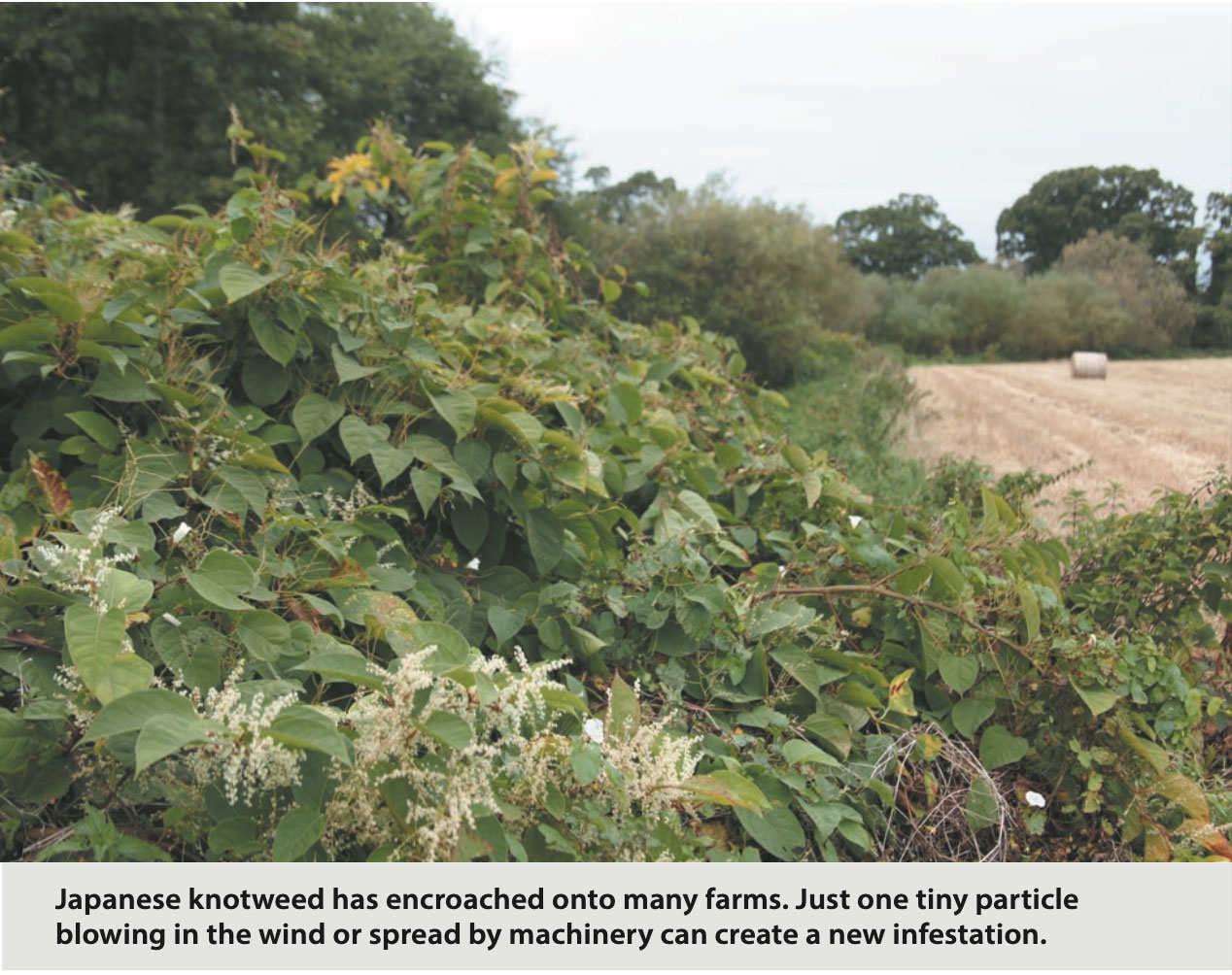
The rapid spread of Japanese knotweed is becoming a serious problem across the country and action is required to eradicate the plant or it could reach epidemic proportions.
An invasive herbaceous perennial plant which is native to Japan and northern China, Japanese knotweed was introduced to Ireland as an ornamental plant in the 19th century. It has established wild populations in a range of habitats across the country.
Its spread seems to have become more pronounced in recent decades, with reports of infestations in practically every county including in many farm situations.
Just one tiny particle of the plant blowing in the wind or transported for miles on a car tyre is enough to create a new infestation. It has a propensity for rapid growth, with growth rates of up to 4cm/day being recorded.
The tall Japanese knotweed thickets exclude all other vegetation and shade the area below. Native species can rarely compete with this invasive species and local biodiversity is reduced.
Because of its ability to grow through cracks in concrete and tarmac, it can seriously damage houses, buildings and hard surfaces. It can also result in planning permission difficulties for new buildings and facilities.
Spraying with Garlon Ultra gives excellent control
Spraying with the herbicide Garlon Ultra has been proven to give excellent control of Japanese knotweed. A number of local authorities which have used the product in recent years have achieved a reduction of 80% after the first application alone.
Containing the two powerful chemicals, aminopyralid and triclopyr, Garlon Ultra is guaranteed to kill the roots, leading to the elimination of the pernicious and invasive plant.
Unlike glyphosate, Garlon Ultra does not kill grass. This means that the sprayed area is recolonised more quickly with grass after the Japanese knotweed is killed.
Chris Maughan, technical manager with Whelehan Crop Protection, which distributes Garlon Ultra on the Irish market, said farmers who have completed the training course on the safe use and application of pesticides and are registered as a ‘professional user’ with the Department of Agriculture, Food and Marine are in a perfect position to apply the herbicide.
“It can be sprayed using a suitable lance on a tractor-mounted sprayer, a quad sprayer or a knapsack sprayer. “For spot spraying, use 150-200ml of Garlon Ultra per 10l of water. The plant should be thoroughly wetted with the spray solution, but spraying until ‘run-off’ will decrease activity,” said Chris. He said autumn can be a good time to spray. It will usually require follow-up sprays over the following couple of years to fully eradicate the plant, especially where it is very dense.
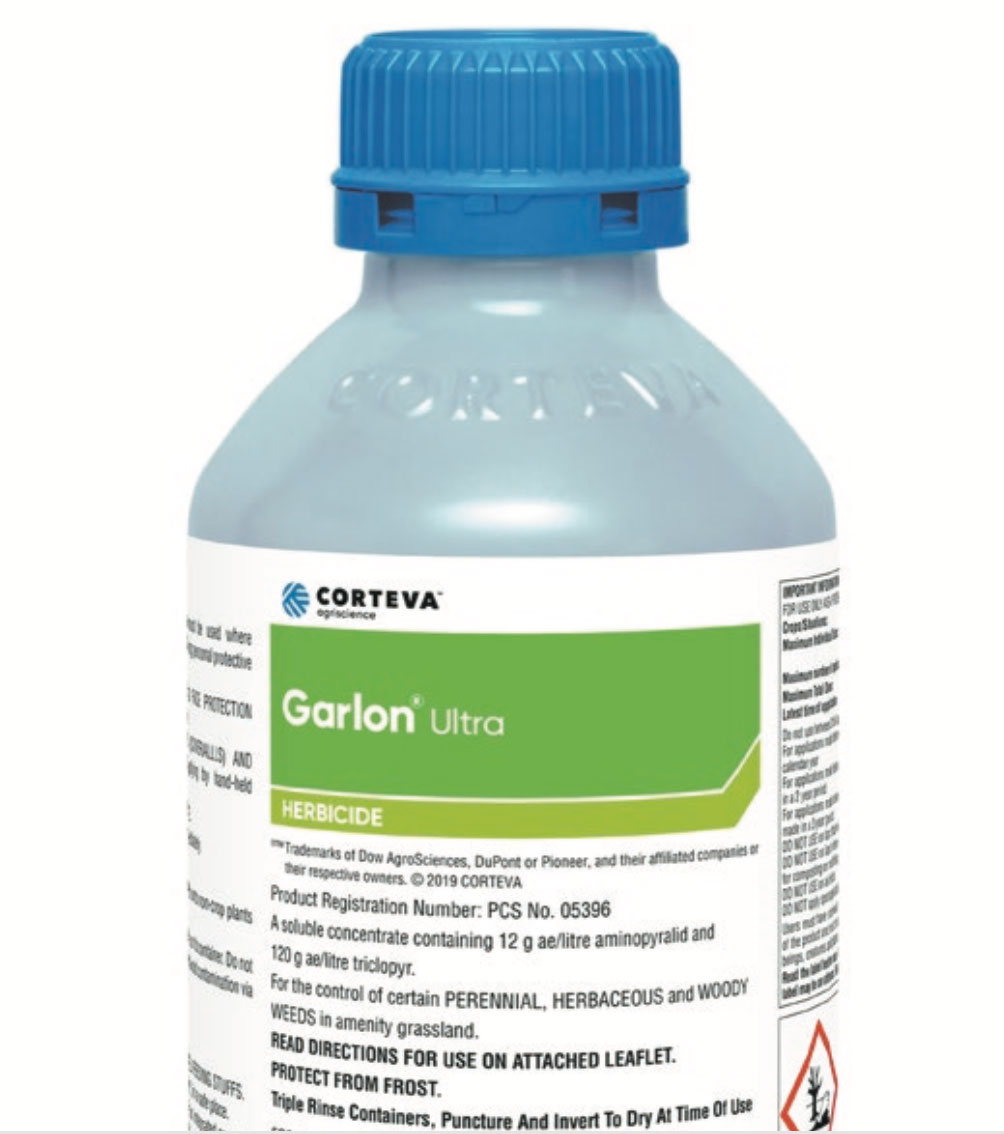
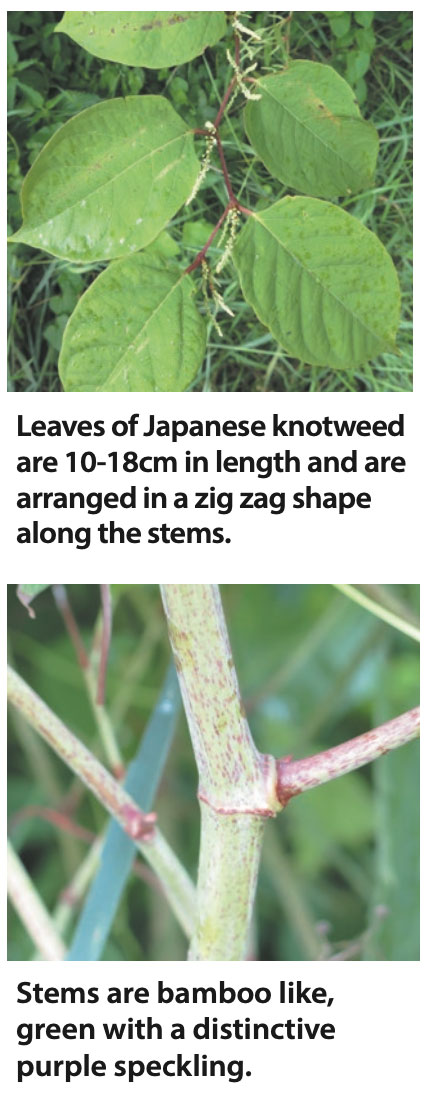
How to recognise Japanese knotweed
Newly emerged buds of Japanese knotweed emerge early in the spring. They are generally red in colour and have spear-like stems. They grow very quickly and reach 1.5m by early summer and 3m by July.
Leaves are 10-18cm in length, green and heart or spade shaped with pointed tips. They are arranged in a zig zag shape along the stems. It also produces clusters of cream small flowers towards the end of July, which can look quite attractive.
The stems are bamboo-like, green with a distinctive purple speckling colour. Stems are hollow and in late autumn they die back and become dark brown.
In winter, the plant dies back leaving dead brown cane-like stems still standing or lying on the ground. The dead canes can still be seen among new stands the following spring and summer.
Underground, the plant has an extensive rhizome system which is essentially an underground stem. These rhizomes can grow up to seven metres horizontally and up to three metres deep.
Take care with cutting and disposal
Japanese knotweed is a regulated species in Ireland. This means that “any person who plants, disperses, allows or causes to disperse, spreads or otherwise causes to grow Japanese knotweed shall be guilty of an offence.” If you have the plant on your property it may be advisable to get professional advice. By doing nothing and allowing it to be dispersed or spread, it could be considered an offence.
When attempting to control the plant, cutting is not an option.
• Do not cut and discard any part of the plant on the ground.
• Do not mow, strim or hedge-cut.
• Do not dig it out of the ground and break-up the rhizome system unless it is part of controlled deep excavation works.
• Do not compost cut knotweeds.
Japanese knotweed can be disposed of at a deep-fill licenced landfill site. A licence is required to remove and dispose it. It is important to first check with the landfill site if it can and will accept the waste.
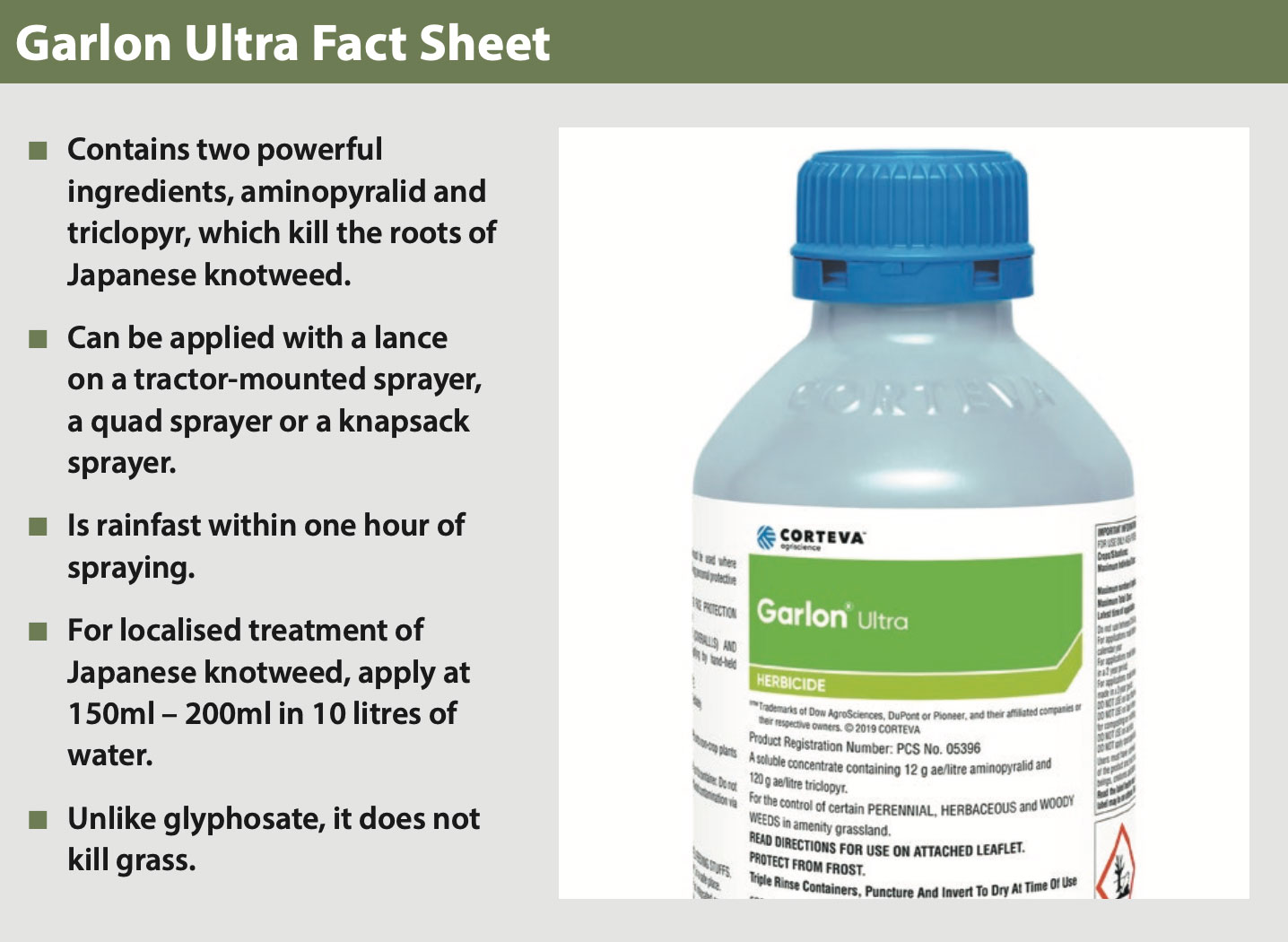
Japanese Knotweed
Japanese knotweed is a native of Japan, Korea, Taiwan and China however the plant is widespread in Ireland, Britain and continental Europe. It is believed that Japanese knotweed was introduced into Ireland in the mid-late 1800’s and this plant has spread from gardens out into the environment
It may have went undetected for many year, but certainly it has become major problem in Ireland over the last 10 years or so.
Japanese Knotweed.
Identification
Japanese knotweed starts growing from early spring and can reach 1.5m by early summer and 2-3m by July, before dying back between September and November.
Newly emerged Japanese knotweed buds emerge early in the spring and are general red in colour and have spear like stems. These grow very quickly in spring and can grow up to 20cm per day. By summers the plant can be up to 2-3 meters in height.
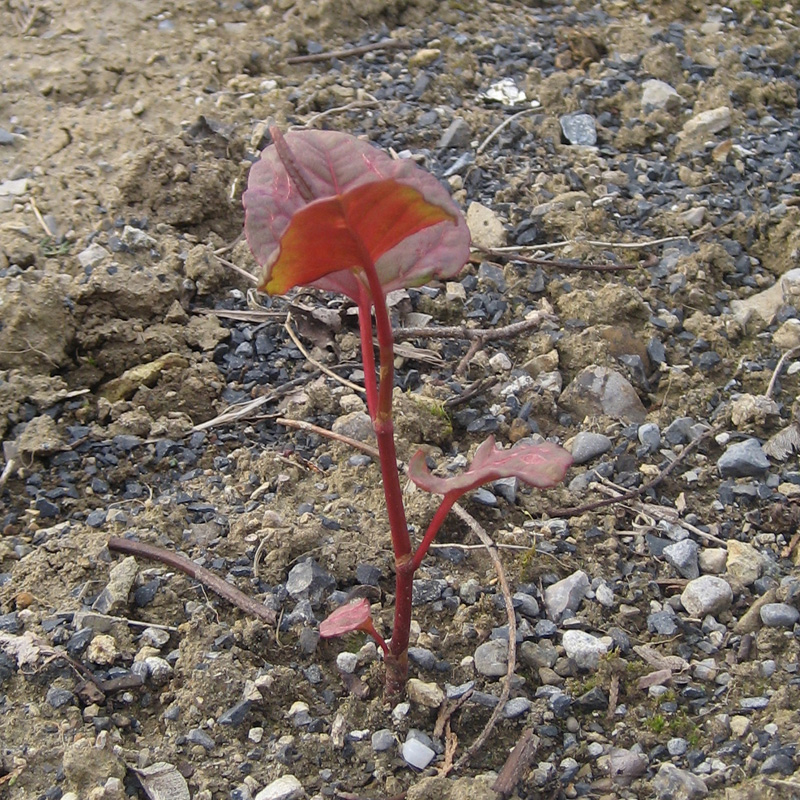
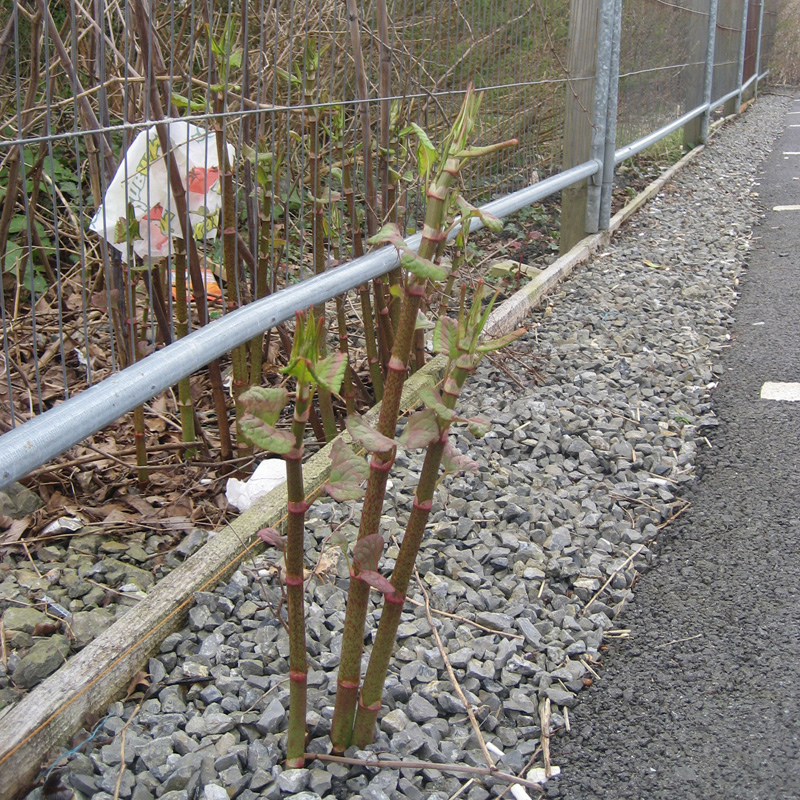
Leaves
Leaves are 10-15cm in length, green and heart or spade shaped with pointed tips. They are arranged in a zig zag shape along the stems. It also produces clusters of cream small flowers towards the end of July which can look quite attractive.
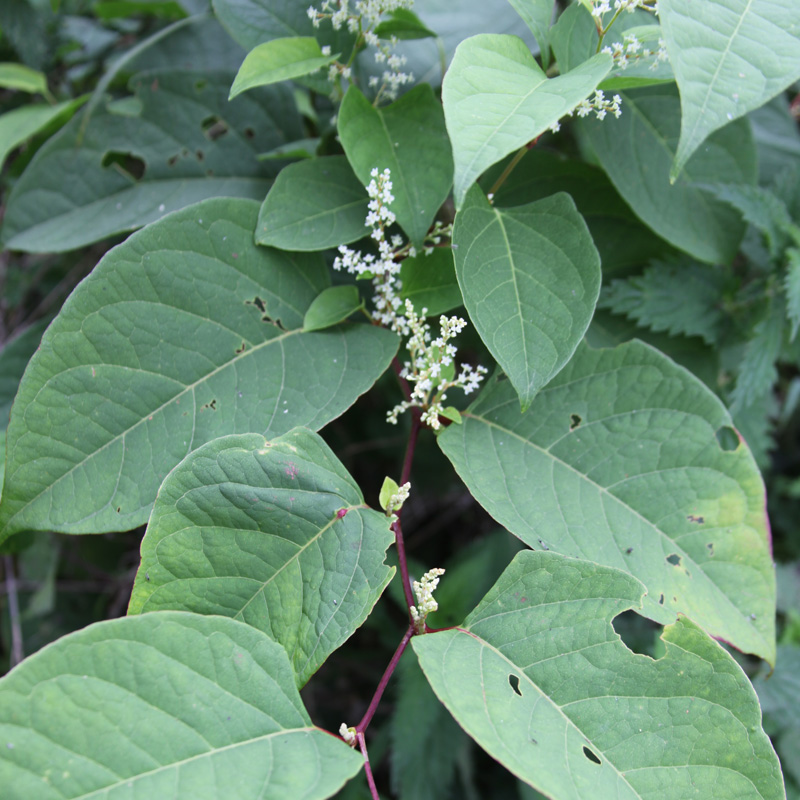
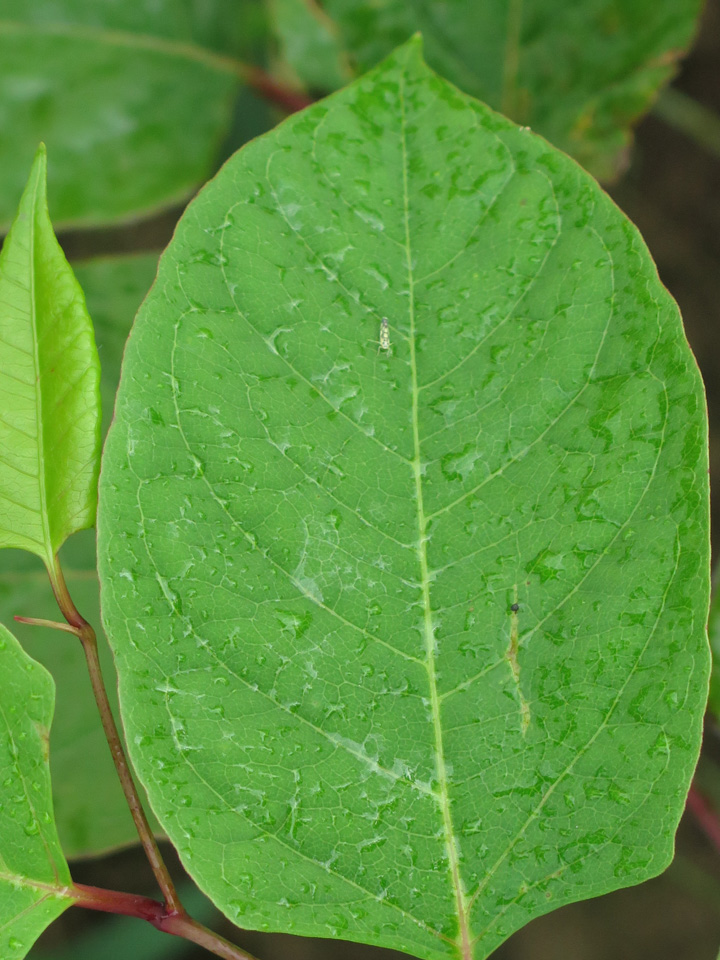
Stems
The stems are bamboo like, green with a distinctive purple speckling colour on them. The stems are hollow. They can form dense stands at this stage and can be up to 3 metres in height. By late autumn they die back and become dark brown and can break off from the base over winter time.
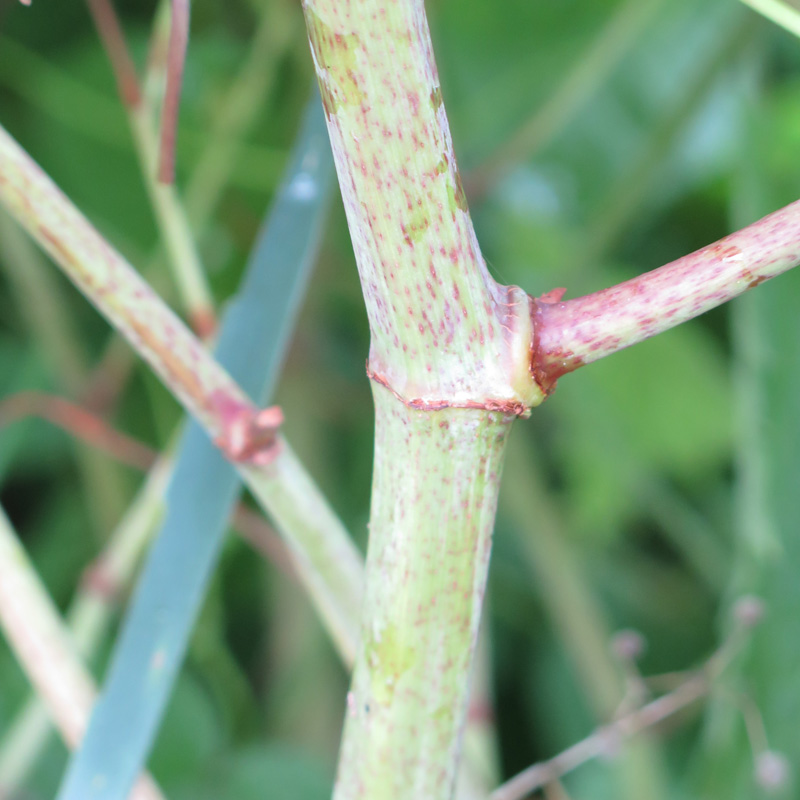
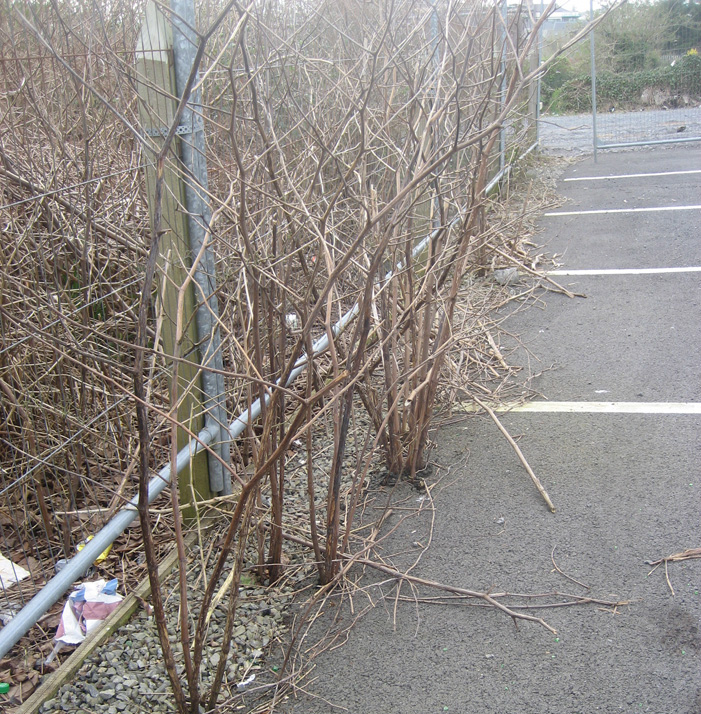
Further identification information available from the National Biodiversity Centre ID sheet.
Is Japanese knotweed a regulated species in Ireland?
Yes, under Regulation 49(2) any person who plants, disperses, allows or causes to disperse, spreads or otherwise causes to grow Japanese knotweed or any of the other invasive plants listed in the Third Schedule of the European Communities (Birds and Natural Habitats) Regulations, 2011 (S.I. No. 477 of 2011) shall be guilty of an offence. Furthermore, Sections 52(7) and (8) of the Wildlife Act, 1976, as amended, 1 make it an offence to plant or otherwise cause to grow in a wild state exotic species of plants.
The National Biodiversity Data centre has produced a frequently asked questions guide on Japanese knotweed in Ireland that is very useful.
Who can spray or apply herbicides to Japanese knotweed?
Under the Sustainable Use of Pesticides Directive there are restrictions on use and application of herbicides by professional and amateur users.
All operators need to be qualified in the application of pesticides if they wish to apply a professional herbicide like Garlon Ultra or Synero. Many farmers and landscapers would qualify if the spraying course was undertaken.
Further information is available from the Pesticide control services section of the Department of Agriculture. Details on all the regulations under the Sustainable Use Directive (SUD) can be found there.


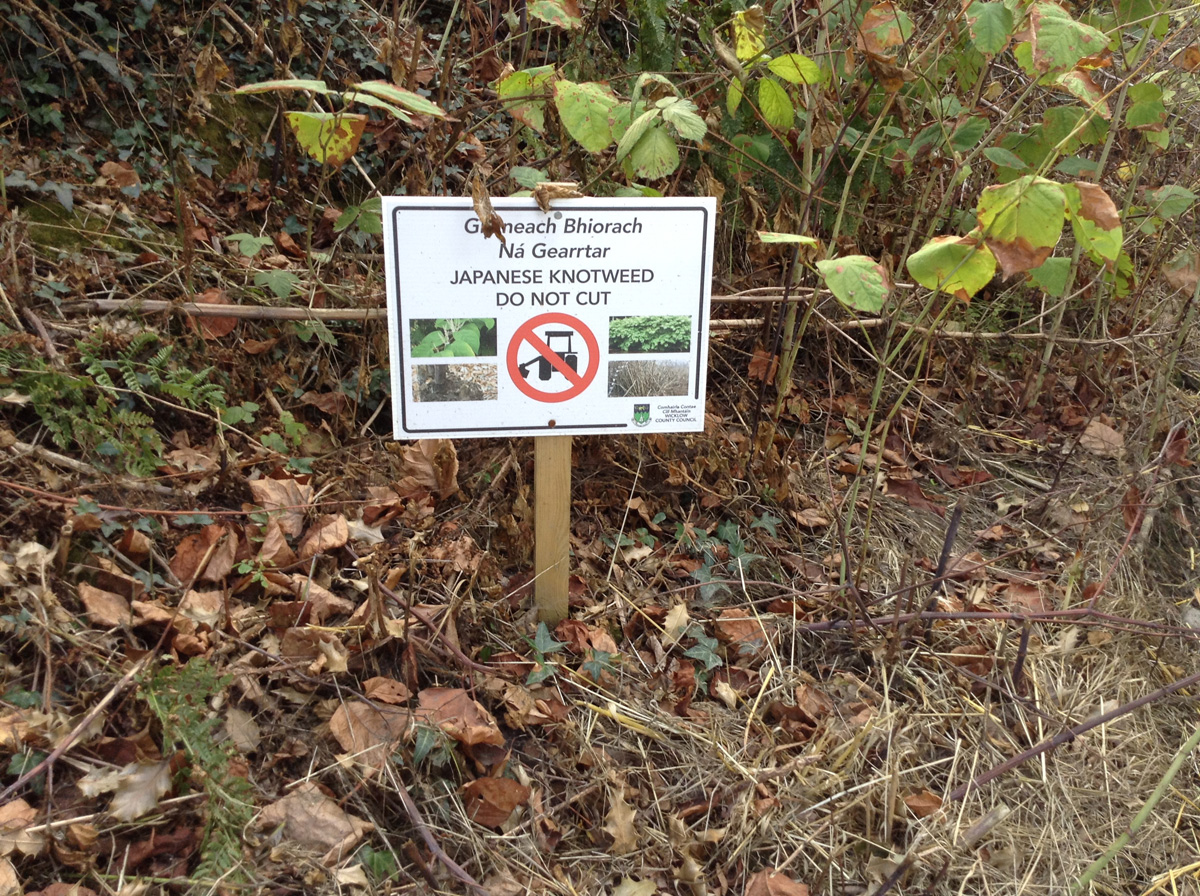
Contact Us
For further information on the control of Japanese Knotweed or to discuss any specific queries
you may have please do not hesitate to contact one of our technical weed control specialists.
